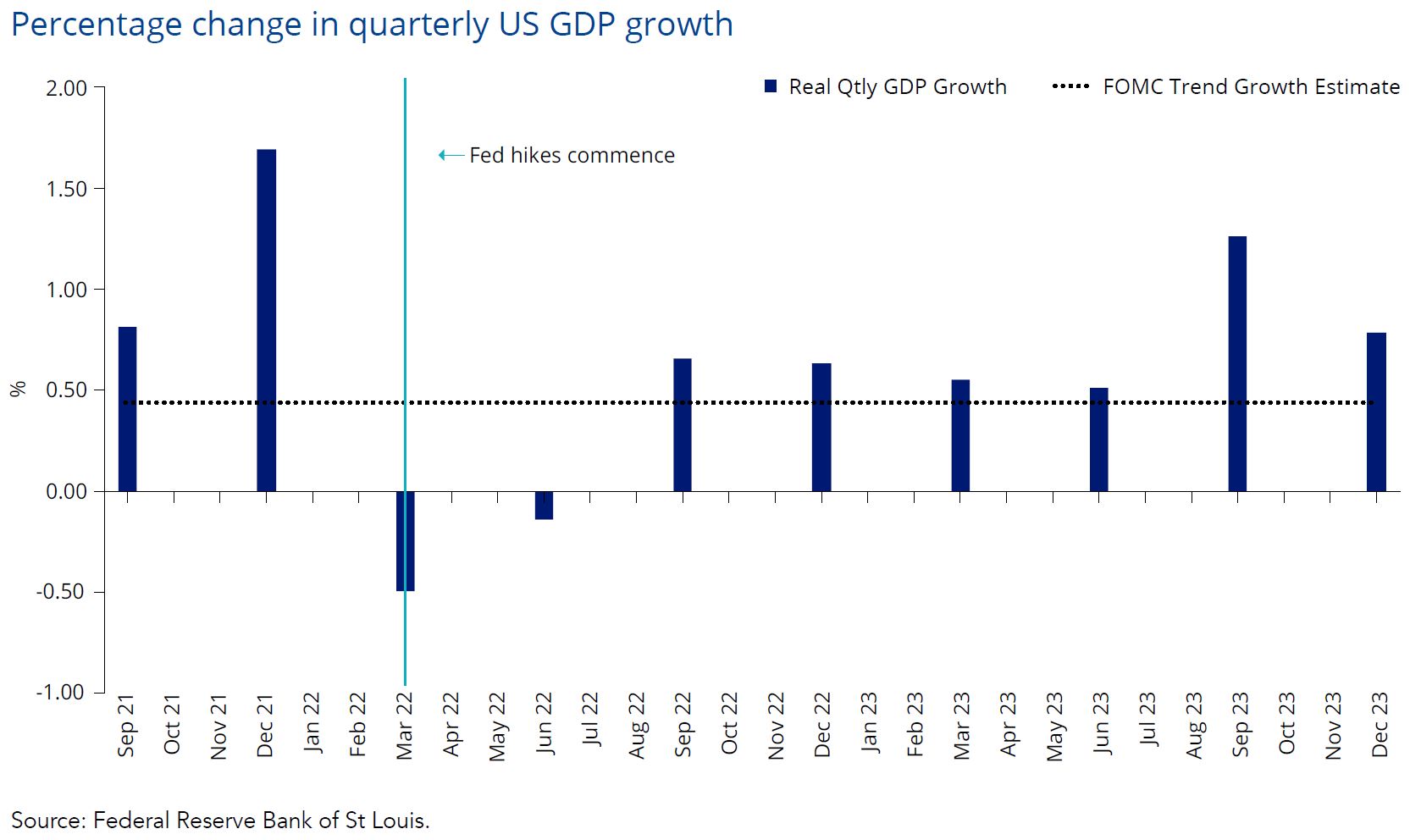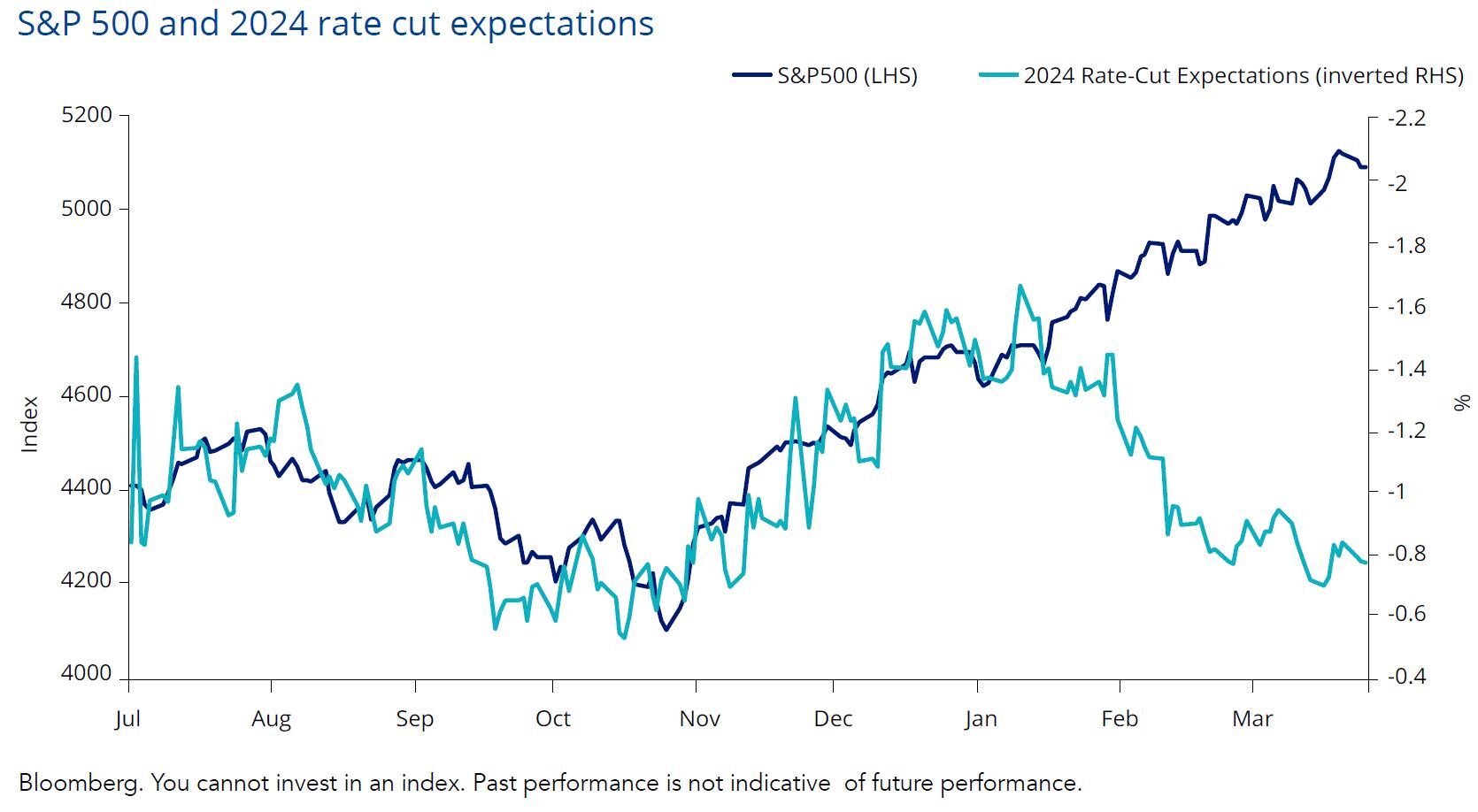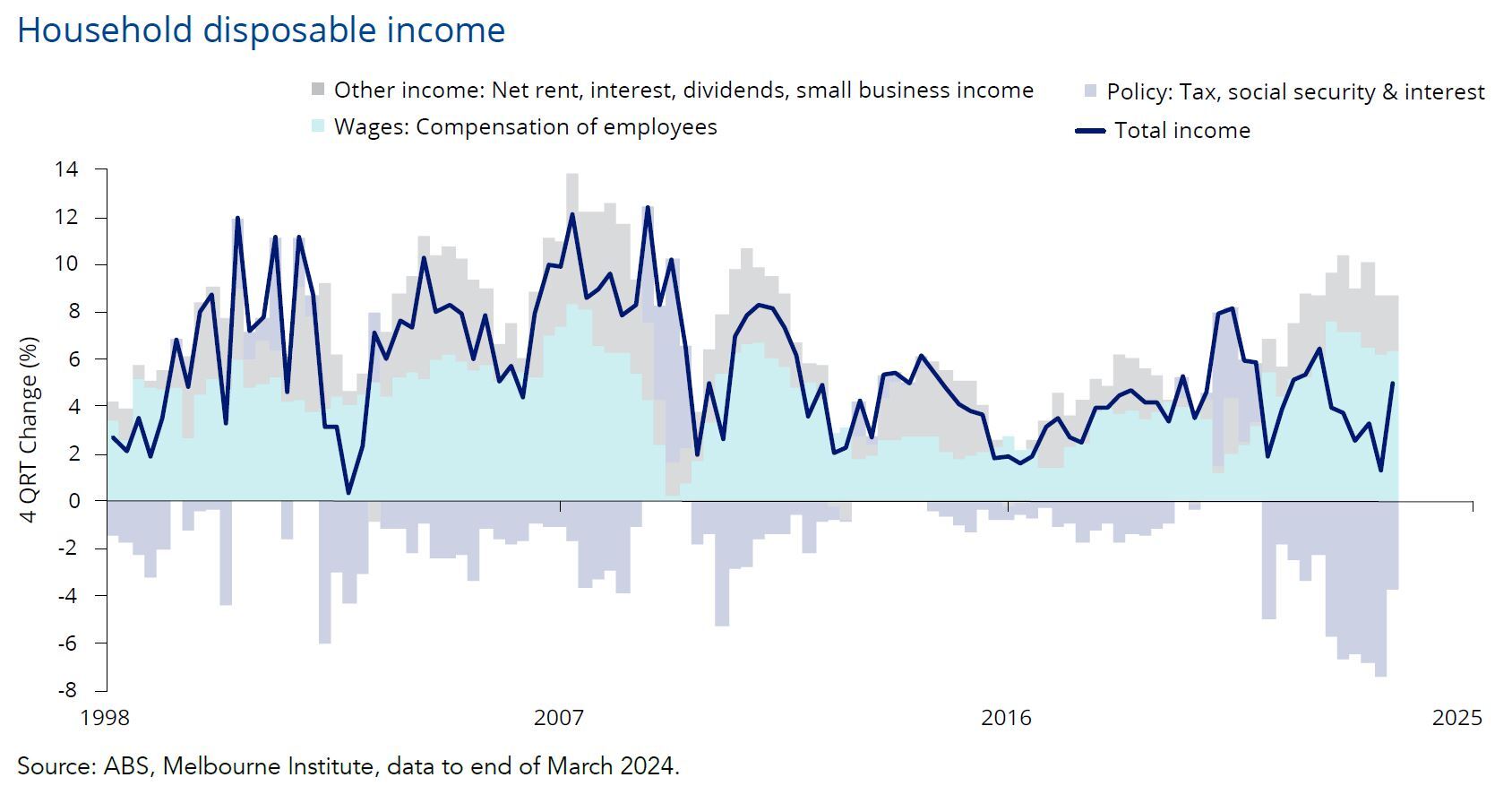Dude, where’s my recession? How to invest for diverging markets
After a few years where monetary policy around the world was more or less in sync, 2024 looks different with some central banks about to go their separate ways. Some differences relate to the state of the various economies, but their impact on markets has been the story of market returns so far in 2024, particularly the shifting expectations on Fed rate cuts.
In this wire, I’ll discuss the year ahead, the whereabouts of the long-awaited recession (if it comes at all…) and how investors can approach markets in light of this.
A quick recap of the year to date
At the start of the year, the market was pricing in six to seven Fed rate cuts. While the Fed was never that bullish, the market has since tapered its cuts more in line with the Fed’s predictions.
Globally, equity markets had a strong quarter, led by Japan and the US. Global and US equities were boosted by telecommunications and IT. In Australia, the materials sectors weighed on returns, as too did our telecommunications sector. Our IT sector starred, as did consumer discretionary and real estate.
Looking ahead, investors should be wary about geopolitics. It’s an election year in the US and potentially a UK general election. That’s before we factor in any other knowns (such as conflicts in Ukraine and Gaza) and unknowns. Never underestimate the impact of regional geopolitics.
The most-anticipated recession ever might not come (for the US)
The debate over recent quarters between a US ‘hard landing’ and a ‘soft landing’ has overlooked another outcome that is seemingly coming to fruition – that the US economy doesn’t experience any kind of landing.

On the growth front, the US economy looks fine. Business investment is solid. At the same time, real household income has improved as inflation has retreated, stoking consumer sentiment. The housing cycle is turning up, and in an election year, there’s no sign of any fiscal retreat.

On the inflation front, it’s looking increasingly likely that the ‘transitory’ has transited, both up and down, and the remaining inflation rate is too high. While markets initially forecast six to seven easings, they have now dropped to three - in line with the Fed forecast.
There is little reason to expect a soft economy for the next two to three quarters, but also little or no chance of a slackening labour market. The result? Getting core inflation down to 2% seems a forlorn hope.
So, why is the Fed intent on easing?
Perhaps the Fed is willing to live with higher inflation readings for longer, in exchange for more robust growth. Then, in turn, it may hope to shift on inflation down the track. The risk of this approach is a bond sell-off and pressure on valuations.
Australia is a different story
Unfortunately, while recent inflation data has been promising, the worry is that the RBA has missed the boat on growth.
It’s not hard to find data to suggest the Australian economy is doing it tough. We’re potentially already at a soft landing, and there aren’t too many growth positives right now.
Business investment has been OK, but housing investment is in the doldrums despite rock-bottom vacancy rates. Commodity prices for Australia’s exports look toppy. Real household disposable incomes, battered by inflation, have been going backwards. And that’s before rising mortgage repayments. Not surprisingly, consumer spending has stalled, led by discretionary spending.

While broad measures of labour market slack have been rising, driven by rising population, employment is hanging in. Hours worked have been rising despite soft GDP, which implies poor productivity performance.

Part of the explanation is the switch from goods to services coming out of COVID. The services sector generally has lower productivity than the goods sector. Part could be a genuine slowing of productivity as the capital stock has failed to keep pace with growing employment. The ratio of capital to labour is a prime determinant of productivity.
When it comes to the RBA, policy traditionally lags late and volatile economic data. The RBA has gone to a neutral bias and anticipates any global easing cycle will be led by the US. Any signs of labour market capitulation will drive Australian rate cuts.
An eye to other nations
Japan has been a standout, finally ending its deflation spire and seeing wage rises at over 5%. Rates are going higher across the yield curve for Japanese Government Bonds (JGBs), and sooner or later, the yen will follow. We anticipate a steady tightening path.
We like Japanese equities with the attached yen exposure.
The Nikkei has finally hit a new all-time high. Many Japanese companies have cleaned up their balance sheets and increased their return on capital, and Japanese investors are largely underweight in these companies.
China, on the other hand, has been hit by negative news in terms of developers’ debts – and there has been no blueprint for a resolution in China’s ‘two sessions’. It has longer-term structural aspirations, such as affordable housing, and any policy easing is predicted to be more cautious and measured.
Cautious policy easing, combined with expectations of growth recovery, could push domestic interest rates higher at some point in the coming weeks/months. With the Fed confirming that it is likely to start cutting its policy rate in the second half of the year, this reversal of the interest rate differential, which is still close to historic lows (negative), can improve the outlook for both the renminbi and for emerging market FX peers which are correlated with it.
How to approach investing in the current clime
For the rest of 2024, investors should approach risk assets selectively. In addition to avoiding concentration in markets like Australia, we think a good place to start is to focus on leverage, i.e. balance sheets and cash flow. We could see the US dollar come off further and gold continuing to shine.
As an aside, gold miners have strong cash flow and we’ve seen them start to outperform during the backend of the quarter. Navigating equities smarter, through factor strategies such as ‘quality’ and ‘low-size’, becomes more meaningful.
3 topics

